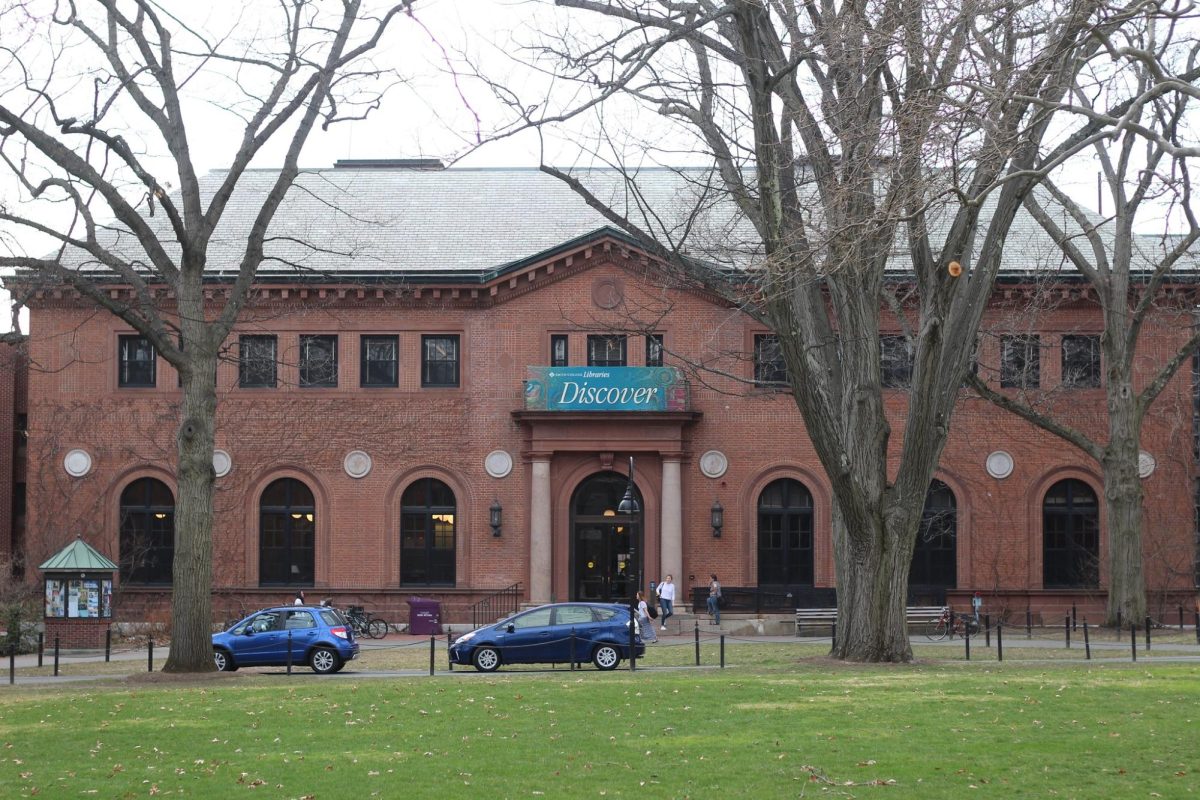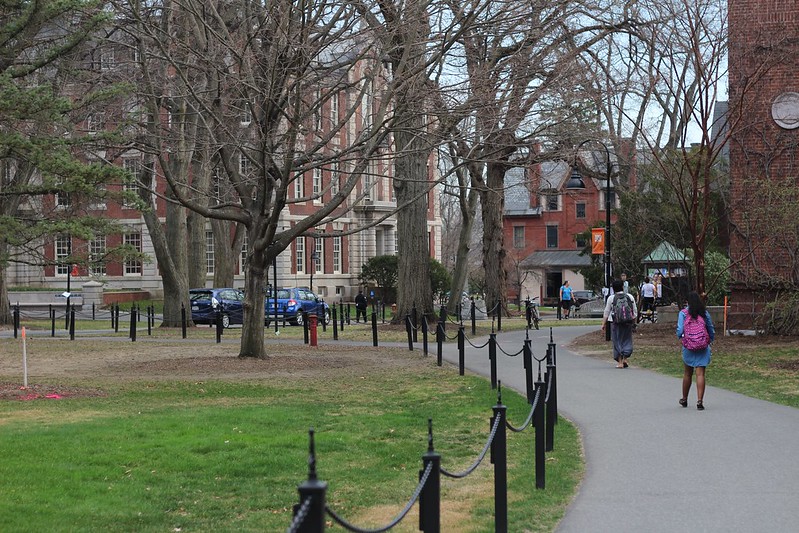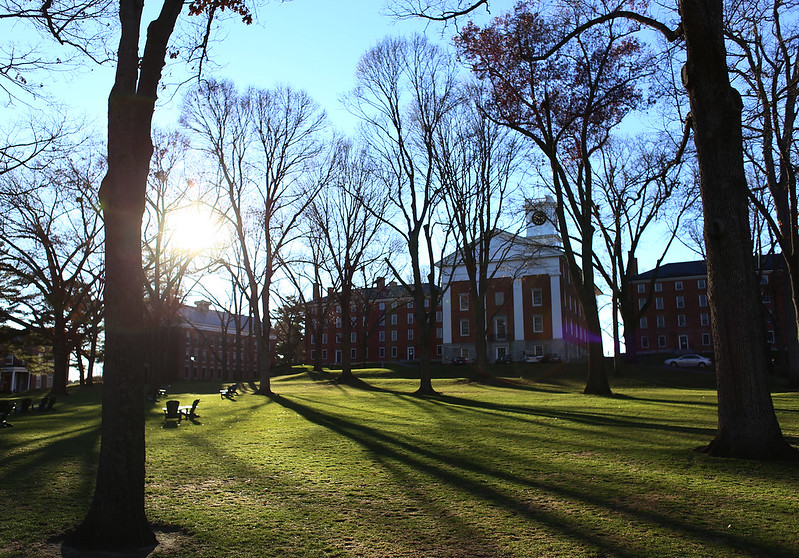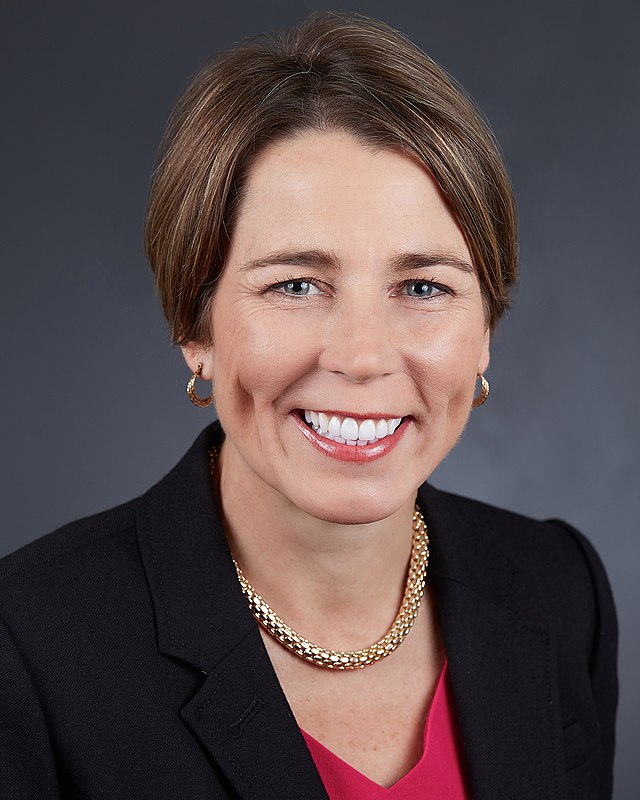Also see: “Proposed merger between SBS and HFA met with scrutiny, opposition from faculty”

University of Massachusetts Provost James V. Staros is convening a new Provostial Working Group for the Arts, Humanities and Social Sciences to study the feasibility of merging the colleges of Humanities and Fine Arts and Social and Behavioral Sciences.
The working group, composed of the chairs of 10 departments, five from HFA and five from SBS, will meet approximately once every two weeks throughout the fall, according to Staros, who will chair the group himself.
After an initial Reorganization Committee composed of 22 members of the faculty and staff of the two colleges presented a report to then Dean of HFA Joel Martin and SBS Dean Robert Feldman last March concluding that the benefits of merging the two schools would have to greatly outweigh what that committee saw as the high cost of such a move, this year’s working group will approach the potential merger with a different attitude, explained Staros.
“The committee [last year] perceived that their charge was to focus on costs, their charge was to look at the negatives,” he said. “It certainly put up all of the problems without balancing it with what the advantages would be.”
Staros said that he envisions a possible merger where the two schools no longer resemble their current selves, where he feels last spring’s committee approached the issue believing the two colleges in their entirety needed to be preserved.
“[The report] did have embedded in it the unspoken assumption that everything we have now we need to preserve,” he said, “what they were sort of saying is, if you were to merge the two, you’d need to have sort of shadow versions of existing administrative functions in the new unit,” Staros explained.
This year’s working group will grapple with a different set of issues, continued Staros. Rather than examining what structural and financial costs such a merger would entail, Staros’ “working group” will attempt to determine a functional way to implement the administration’s plan.
First proposed by Chancellor Holub in the spring of 2009, the idea to merge the two schools into one larger College of Humanities, Arts, and Social Sciences (CHASS) has gone through several examinations and faculty and staff panels, none of which have given the idea a rubber stamp. Holub and members of his administration have contended that consolidating the schools will help save on administrative overhead and will help promote cross-college interdisciplinary research and teaching.
“What I think the Chancellor and I are both interested in doing is de-siloing the campus to provide opportunities for people to work in larger units with more interplay between the units and less distinction between being in unit A, B or C, and this is one potential mechanism. It’s one that people need to adopt,” Staros said.
In the interim since the merger proposal, the colleges of Natural Resources and the Environment and Natural Sciences and Mathematics were merged into one larger College of Natural Sciences (CNS).
That move, some argue, has created an imbalance in amount of funding per student flowing to the respective colleges of the state university’s flagship campus. As such, administrators have proposed creating a CHASS to “counterweigh” the sway of CNS.
Some faculty and staff, however, are uncomfortable with a CHASS without some element of sciences, specifically psychology.
“There’s a sense I think that people have that it would have been better for a merger to have included NS, SBS and HFA into one college, an arts and sciences college, and there’s some discomfort that we’re sort of going with an unusual model that, if you look around the few colleges and universities that have this structure, none of them have it with psychology taken out,” sociology and public policy professor Joya Misra said.
Staros was quick to point out that the move to include psychology in CNS took place before his arrival in Amherst in August 2009 from Stony Brook University in N.Y. However, he said he has been discussing with faculty and staff from numerous colleges the idea of creating individual departments which exist between colleges to promote interdisciplinary work and to allow the schools more flexibility.
“One thing I have been talking to various department chairs about is a model not currently used at UMass, but one that I’m familiar with from campuses where I’ve been previously,” he said, “where, in certain borderline disciplines that have pieces in them that have on department in more than one college.”
Staros elaborated that such a model could apply to a department like psychology.
“It’s a unified department,” he explained of the hypothetical structure of a cross-college department, “but some faculty have tenure in one college and some in the other.”
While Staros holds that going through with the merger will help promote what administrators are calling a “binary star” model, where the two large colleges are the center of the University and other smaller departments revolve around them, some members of the faculty feel that the two colleges’ missions are simply different, and that rather than bolstering the schools’ standing, a merger may ultimately hinder them.
“People have talked about it as a binary star model,” said Misra, “but my sense would be that I’d actually prefer there be two deans counter-weighing the natural sciences feed.”
Were SBS and HFA to become a CHASS, the new college would likely have one dean, with numerous administrative assistants helping meet faculty within the new school’s needs.
Last March’s report, however, cautions that such a load on one dean, especially in the early going, could simply be too much. The Reorganization Committee noted that the dean would not only need to oversee the functioning of the school and tend to faculty morale, but would also be tasked with meeting potential donors, rebranding the college, determining new administrative roles, faculty course loads, and a host of other responsibilities.
Staros, however, is confident that these challenges can be overcome.
“That’s part of the role of this working group that I’ve just convened,” he said of determining how a smooth transition could be assured, “to look at what one will do to make this as smooth as possible and have least disruption on individual faculty lives.”
Staros said that while members of the faculty and Faculty Senate are aware of the working group’s existence, “this is an ad hoc working group,” meaning he was not planning to announce publicly the group’s work.
Feldman summed up some of the costs and benefits of a hypothetical merger.
“I’m certain there would be increased opportunities for interdisciplinary work,” he said. “By bringing faculty and students together in the same college, I think there are opportunities that could arise for interdisciplinary work and interdisciplinary classes, a cross-pollination of the disciplines that might not occur if the merger didn’t happen.”
Feldman also noted that a merger would help mitigate the clout of CNS.
“Because of the merger into the CNS we have a situation with one extremely large college and other colleges which are considerably smaller,” he explained, “and I think that provides the opportunity for CNS to be unduly influential on campus.”
Feldman disagreed, however, that consolidating the schools would create savings.
“I don’t think we’d see any kind of immediate economic savings,” he said.
New interim dean of HFA Julie Hayes did not return calls for comment for this story.
Sam Butterfield can be reached at [email protected].













Linda Screws • Oct 5, 2011 at 3:46 pm
I truly wanted to compose a small message to appreciate you for all of the unique ways you are giving out on this site. My extended internet lookup has at the end been rewarded with awesome content to go over with my family. I ‘d believe that most of us website visitors actually are really fortunate to be in a decent network with very many lovely professionals with good advice. I feel very lucky to have used the web pages and look forward to so many more enjoyable minutes reading here. Thanks once again for all the details.